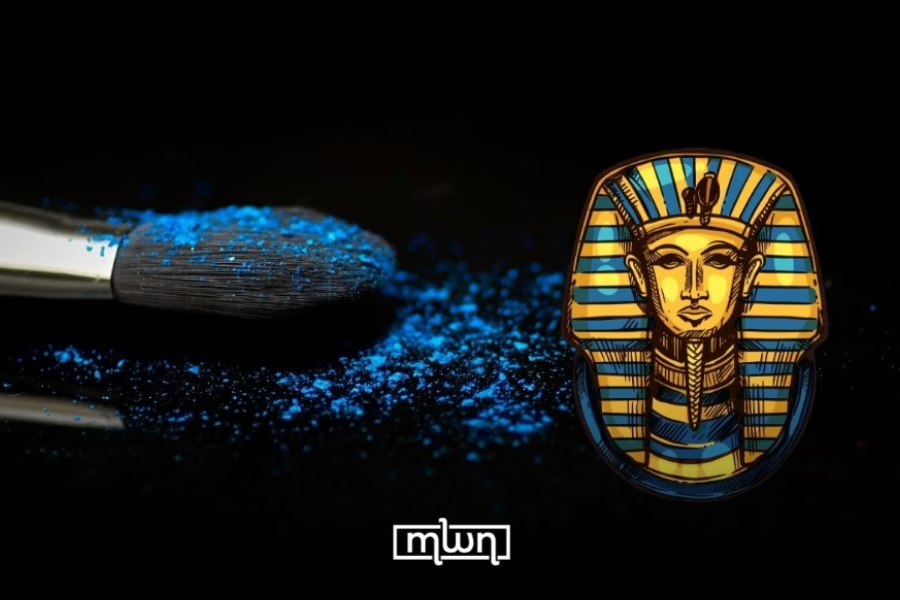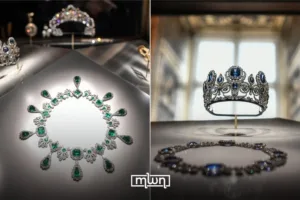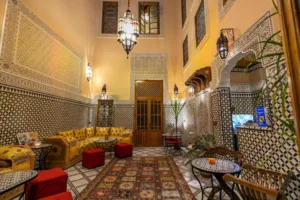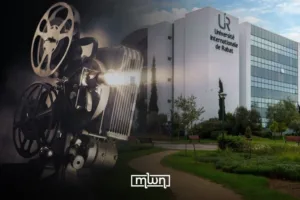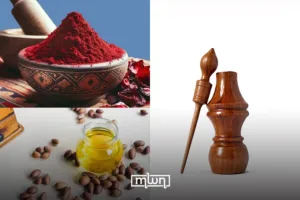Ancient Egypt’s boldest color has just been brought back to life
Fez– When we think of ancient Egypt’s genius, we usually jump straight to mummies, pyramids, and the whole “defying time” business.
But there’s another masterpiece that often gets overlooked: “Egyptian blue,” a vivid, shimmering pigment that just happens to be the oldest synthetic color known to humankind.
Yes, they made their own paint… thousands of years before oil paints were a thing.
Fast forward to 2025, and a team of researchers from Washington State University, along with collaborators from the Carnegie Museum of Natural History and the Smithsonian, have managed to do something pretty spectacular: they’ve recreated this ancient color from scratch using modern science.
And no, it wasn’t as simple as mixing blue food coloring into playdough.
So, what’s the big deal with Egyptian blue?
For starters, it’s not just a color, it’s a scientific puzzle, an artistic statement, and a materials engineering marvel all rolled into one.
At the heart of this shade is a rare compound called “cuprorivaite”, a turquoise-leaning mineral that forms when you heat a precise mix of silica, copper oxide, and calcium carbonate at temperatures reaching 1000°C.
The Egyptians pulled this off without labs or thermocouples, just fire, intuition, and a bit of magic.
The recent study, published in “Heritage Science”, took that recipe and modernized it. The researchers tested 12 different versions using ultra-pure materials, think clean silica (a fancy way to say sand), natron (basically Egyptian baking soda), and copper sources.
They experimented with heating times and temperatures, observing how each tiny tweak changed the outcome.
It turns out even slight differences in cooling speed or ingredient ratios affected whether you got a deep ocean blue, a dusty teal, or something closer to moss.
The team didn’t stop there. They compared their lab-made pigments with actual samples from two ancient Egyptian statues, one from the reign of Akhenaten (14th century BCE), and another from the Ptolemaic era.
Using high-powered tools like electron microscopes and X-ray diffraction, they found a striking match.
The structure of the blue crystals, the way the light reflected off the pigment, all of it mirrored the real deal.
That’s not just color-matching; that’s forensic archaeology meets material science.
The coolest part? This isn’t just a “wow, neat history” moment. Egyptian blue emits infrared light, which means it could be used in cutting-edge tech, from anti-counterfeiting inks to medical imaging.
Shrink its particles down to the nanoscale, and it becomes even more efficient. Imagine a color invented to paint a falcon god’s crown, now helping detect fingerprints or improving cancer scans. Ancient Egypt, meet modern innovation.
And if all that feels a little too high-tech, here’s something simpler: this rediscovered pigment could one day end up in luxury textiles.
Imagine wearing a scarf dyed with a color formula that dates back to the Pharaohs, one that never fades, never dulls, and comes with a story longer than most civilizations.
Today, these re-created pigments are on display at the Carnegie Museum in Pittsburgh, nestled inside a gallery devoted to ancient Egypt.
But they’re more than museum pieces, they’re proof that even secrets buried for millennia can be brought back to life, with a little curiosity, a lot of collaboration, and just the right amount of fire.
Read also: Saudi Arabia Is Building a New SuperCity With an F1 Track

